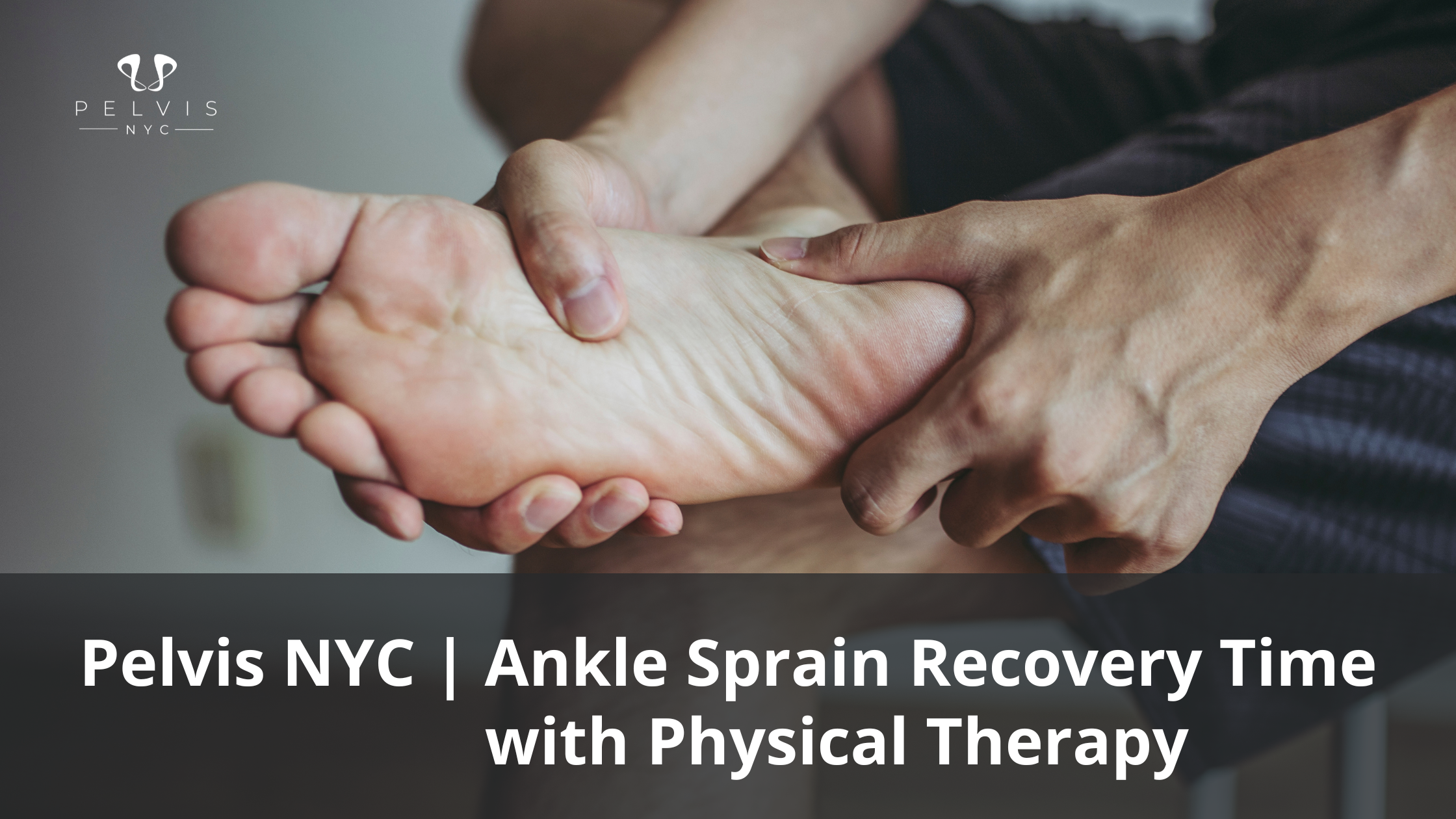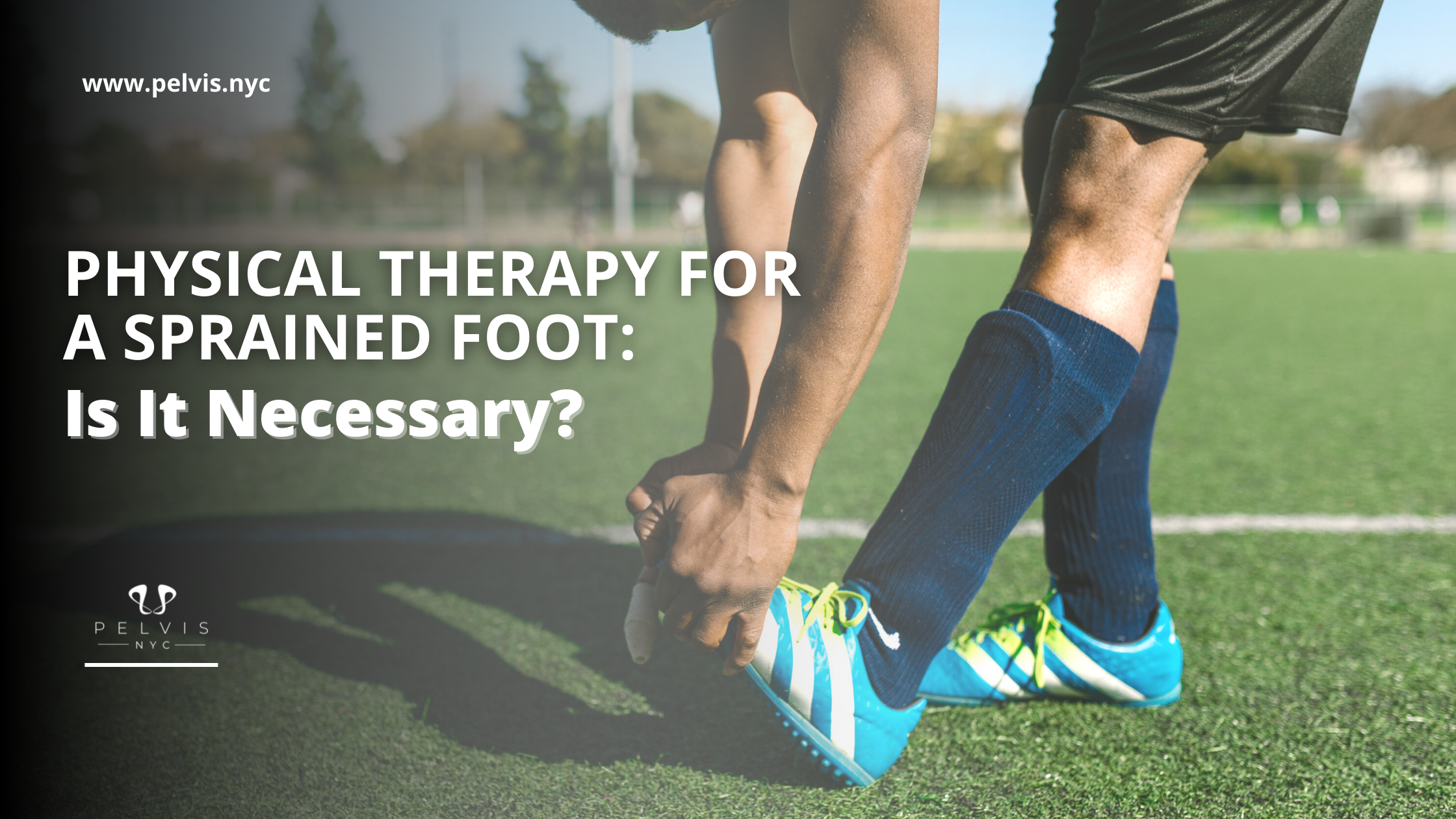
We don’t think much about our ankles—until they hurt. Suddenly, that small but mighty joint can make something as simple as walking to the subway feel like a marathon. Ankle pain can cause difficulty walking, especially on uneven surfaces or stairs, making daily activities much harder.
Whether it’s a sharp pain after rolling your ankle on the sidewalk or a nagging ache that won’t go away, ankle pain is more than an inconvenience. It’s a signal from your body asking for attention. Noticing pain early is crucial, as it can be a sign of an injury that requires prompt care.
Ankle Injury vs. Ankle Sprain: What’s the Difference?
You’ve probably heard someone say, “Oh, it’s just a sprain.” But anyone who’s had one knows there’s nothing “just” about it. An ankle sprain happens when you overstretch or tear the ligaments that stabilize your ankle—usually from a twist, a misstep, or sports. These ligaments connect the ankle bones, and tears can lead to swelling and bruising. It’s actually one of the most common ankle injuries out there.
The tricky part? Even a minor sprain can come back to haunt you if it doesn’t heal properly. Left unchecked, it can turn into chronic ankle pain—that dull, persistent ache that flares up when you least expect it. Untreated injuries can also result in long-term ankle pain that persists for weeks or longer.
Common Causes of Ankle Pain
Not every case of ankle pain comes from a dramatic fall or sports injury. Sometimes it sneaks up on you. A few common culprits include:
- Flat feet: When your arches collapse inward, your ankles often pay the price. Excess body weight can contribute to ankle pain by increasing strain on the arches and joints.
- Overuse: Daily runs or long shifts on your feet can create stress and microtears. Overuse can also lead to foot pain and discomfort in the surrounding areas.
- Arthritis: This can stiffen the joint, making each step feel heavier than the last. Arthritis can cause joint pain, especially when the cartilage between two bones wears down. Specific types of arthritis, such as rheumatoid arthritis and reactive arthritis, can affect the ankle joint, with rheumatoid arthritis involving the immune system attacking the joints.
- Old injuries: That sprain you ignored in college? It might still be messing with your gait today. Conditions like gout can cause intense pain in the big toe, and issues with the heel bone can also contribute to ankle pain.
The bottom line? Foot and ankle pain is rarely “random.” There’s almost always an underlying reason—your job, your shoes, your anatomy, or simply life catching up with you.
Why Chronic Ankle Pain Is More Than Just Annoying
This type of pain doesn’t just slow you down physically. It changes how you move. You might start favoring one side, limping, or avoiding certain activities altogether. Over time, this can create ripple effects—hip pain, back pain, even posture issues. What starts as a little ankle twinge can impact your whole body.
Diagnosing Ankle Pain: Getting to the Root of the Problem
When you start to feel pain in your ankle, getting an accurate diagnosis is the first step toward lasting relief. A healthcare professional will take a close look at your medical history and perform a hands-on examination of your foot and ankle to pinpoint the source of your discomfort. Sometimes, they’ll recommend imaging tests—like X-rays or MRIs—to check for issues such as a broken ankle, arthritis, or other hidden problems that could be causing your pain.
In certain cases, you might be referred to a specialist, such as an orthopaedic surgeon or a foot and ankle surgeon, for a more in-depth evaluation. This is especially important if your pain is persistent or if you’ve had previous injuries that never fully healed. The Arthritis Foundation suggests that if your ankle pain doesn’t improve or gets worse over time, it’s wise to seek medical attention. With an accurate diagnosis, your healthcare professional can create a personalized treatment plan to relieve ankle pain and help you get back on your feet.
Ankle Pain Treatment Options: From Quick Fixes to Lasting Relief
Medical experts, including the Cleveland Clinic, often recommend a blend of short-term and long-term strategies for ankle pain relief:
- RICE (rest, ice, compression, elevation) for acute injuries. Use an ice pack to reduce swelling and pain, and wrap the injured area with a compression bandage, ensuring it is applied properly to avoid cutting off circulation.
- Supportive footwear or braces to keep things stable
- Medication for pain and inflammation when needed. Anti-inflammatory medications are commonly used to reduce swelling and ease pain as part of conservative treatment.
- Surgery, but only when conservative treatments don’t cut it
These are common treatments for ankle pain. Soft insoles can also help provide comfort and support.
But here’s where many people find real transformation: physical therapy.
How Physical Therapy Changes the Game

Think of physical therapy as training for your ankle—not just to heal, but to come back stronger than before. A skilled therapist will:
- Strengthen the muscles around your ankle so they can support you better
- Work on balance and stability so you’re less likely to roll or sprain it again, helping you safely return to physical activities and sports
- Address biomechanical issues, like flat feet, that put extra stress on your ankle
- Use hands-on techniques to restore mobility and flexibility
Unlike quick fixes, PT gets to the root cause. It’s not just about reducing pain today—it’s about building resilience so your ankle can carry you confidently into tomorrow.
When to Seek Medical Attention
Not all ankle pain requires a trip to the doctor, but there are times when you shouldn’t wait. Suppose you experience severe pain, swelling, or notice that your ankle is red or warm to the touch. In that case, it’s time to seek immediate medical attention—especially if you suspect a sprained ankle or a broken ankle after an injury. Chronic ankle pain that lingers or interferes with your daily activities is another sign you should see a healthcare professional.
According to the Cleveland Clinic, if your pain lasts more than a few days or is constant, don’t try to tough it out. A healthcare professional can assess your ankle injury, determine the underlying cause, and develop a treatment plan to relieve pain and promote healing. Remember, early intervention can prevent minor injuries from turning into long-term problems.
Ankle Pain Surgery: What to Know If You Need More Than Conservative Care
While most ankle injuries can be managed with rest, physical therapy, and other conservative treatments, sometimes surgery is the best option for lasting relief. Ankle pain surgery may be recommended for conditions like severe arthritis, tendonitis, or stress fractures that haven’t responded to other treatments. Your healthcare provider will walk you through the risks and benefits, helping you decide if surgery is right for your specific situation.
If you do need surgery, you’re not alone—many people find that it’s the turning point in their recovery. After the procedure, physical therapy plays a crucial role in restoring strength, flexibility, and function to your ankle, reducing the risk of future injuries. Open communication with your healthcare provider ensures you have a clear treatment plan and the support you need every step of the way.
Lifestyle Changes for Ankle Pain Management
Small changes in your daily routine can make a big difference in managing ankle pain and preventing future injuries. Foot and ankle surgeons often recommend wearing supportive shoes that fit well and offer good arch support—this helps reduce ankle pain and keeps your feet and ankles stable. Swapping out high-impact activities for lower-impact options, like swimming or cycling, can also help protect your joints.
Maintaining a healthy diet and a healthy weight reduces pressure on your ankles and supports overall healing. Regular physical activity, such as walking, encourages blood flow and keeps your joints flexible. The foot and ankle experts also suggest making time for gentle stretching and strengthening exercises to keep your ankles strong. By taking these steps, you can reduce your risk of injuries and keep pain at bay.
How to Prevent It: Steps to Keep You Moving
Prevention is key when it comes to keeping your ankles pain-free and ready for anything. Start by choosing shoes with a soft sole and a low heel to minimize stress on your ankle joints. Gradually increase your physical activity to avoid overuse injuries, and make sure to include exercises that strengthen the muscles around your ankles—think toe raises, heel raises, and balance drills.
Using arch supports or orthotics can help reduce pain and provide extra stability, especially if you have flat feet or a history of foot problems. Regular check-ins with a healthcare professional can catch small issues before they become big problems, and they can recommend effective ankle pain treatment options tailored to your needs. By taking these proactive steps, you’ll reduce your risk of severe ankle pain, chronic ankle pain, and keep your feet and ankles healthy in the long run.
Ready to Step Out of Pain?
Your ankles work hard for you every day. It’s time to return the favor. If ankle pain—whether from an injury, flat feet, or something else—is holding you back, physical therapy could be the turning point.
At Pelvis NYC, we specialize in helping people move beyond foot and ankle pain with personalized, one-on-one treatment plans. We don’t just treat the injury—we help you reclaim your stride, your strength, and your freedom to move.
Don’t let ankle pain define your day. Take your first step toward relief with Pelvis NYC today. Book through this link.
You might be interested in reading: Achilles Rupture: How to Recognize, Treat, and Prevent Tendon Injuries




